Made for the shade: plants for north-facing walls
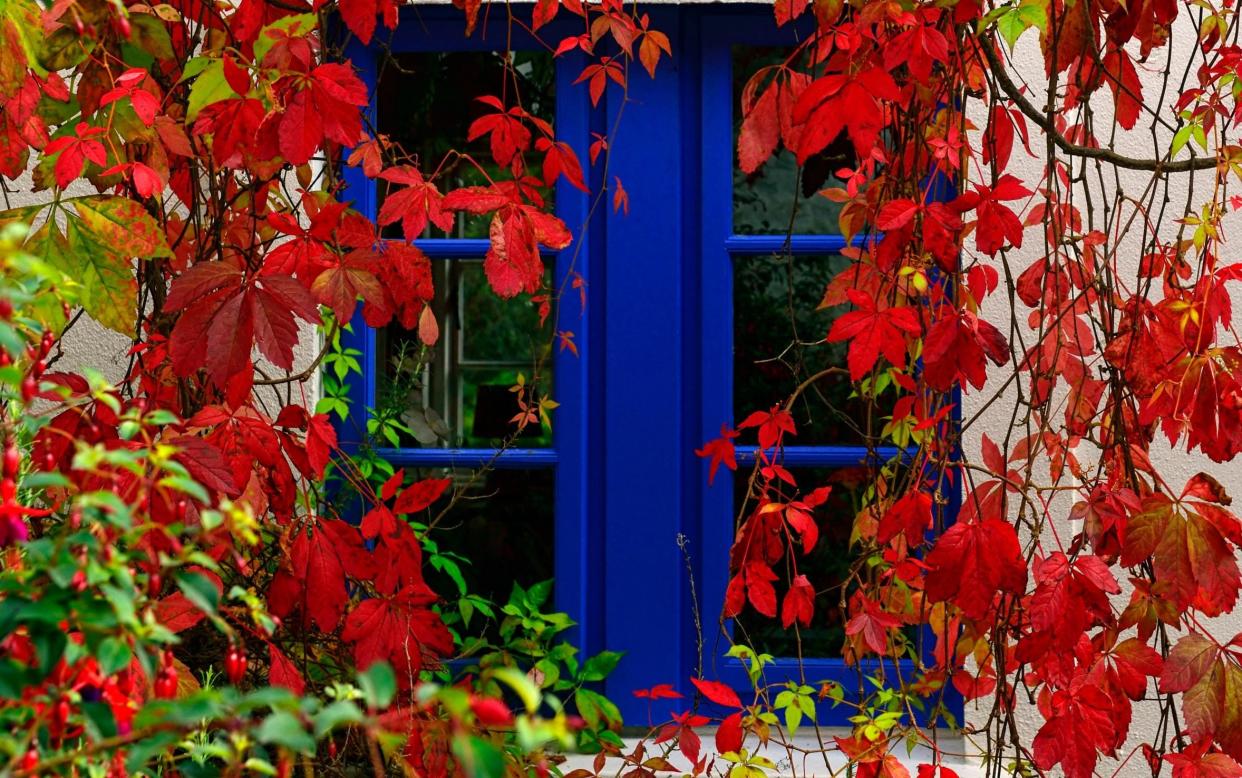
Climbers to cover a north-facing wall are a challenge, but I am wondering if, with warmer summers, we can get away with some plants that are not technically regarded as lovers of full shade. On a visit to Ninfa, the celebrated garden south of Rome, I remember noticing all sorts of plants – ceanothus, irises and several roses – thriving in dark places because of the warmth. Years of received wisdom tell us what we can and can’t do, but occasionally it is worth pushing the boundaries. If you don’t experiment in the garden, you never know what will work.
Self-clingers
The tried-and-tested climbers for shade are the self-clingers. Most people know the white lacecap Hydrangea petiolaris: slow to start, but lovely once it gets going. It shouldn’t need pruning, but if it does, the best time is just after it flowers in summer. Similar, but classier, is Schizophragma integrifolia, which has the added attraction of scent.
Vines
Virginia creeper, Parthenocissus quinquefolia, was the favoured drapery for Victorian houses, and Americans still love it. It clings tenaciously and colours vividly in autumn, but for those who want autumn glory, combined with total coverage, Vitis henryana AGM is more delicate and less vigorous. Neither is evergreen and both will need rigorous management.
Ivies
The best evergreen self-clingers are the ivies. Hedera colchica has glossy green leaves, and Hedera algeriensis ‘Gloire de Marengo’ is a ray of sunshine yellow. If neither of those appeal, there is a wide choice of leaf form and colour on offer. But you do need to make sure the brickwork is sound and mortar joints secure before allowing ivy on your house. Nor should it be allowed to creep onto paintwork or into gutters.
Clematis
Climbers that do not attach themselves are much more work for the gardener. If you can set up a trellis, or a framework of vine eyes and wires, spaced roughly 15in-20in apart, then plants with tendrils can be easier to train than those that have to be tied in. Clematis are an obvious choice. My favourites are the cowslip-scented, pale yellow C. rehderiana, and the late-flowering, “orange peel” C. orientalis ‘Bill MacKenzie’ (which is more lemon than orange). Both are vigorous growers and will need cutting to a couple of foot from the ground in late spring. C. campaniflora has delicate milky-blue bells. I prefer the wilder forms and the viticellas to the big hybrids, but hybrids are possible, too. The blue ‘Perle d’Azur’ is long flowering and reliable.
Twiners
The twining climber to experiment with on a north wall is Trachelospermum jasminoides. This useful evergreen is usually recommended for sun or part shade, but provided you give it a sheltered spot in the shade it should be fine. All honeysuckles, being woodlanders in the wild, are better on shaded walls, because they tend to attract aphids in warm places.
Shrubs
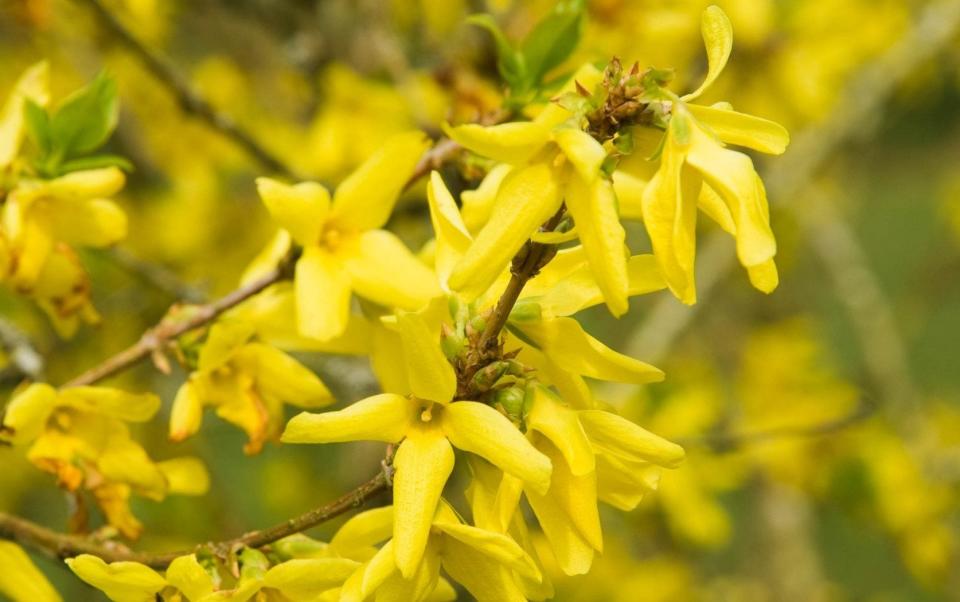
Several shrubs can be grown against a north wall. Some of them will need a bit of help if you want to keep them flat, ie growing tight to the wall. The evergreen Garrya elliptica ‘James Roof’ has spectacular tassel catkins in winter, but can look dull and overpowering in summer, so adding a not-too-rampant Clematis texensis, which is cut back after flowering, would cheer up the garrya. The crimson of Clematis ‘Gravetye Beauty’ or the pink of ‘Etoile Rose’ would look good against the garrya’s grey-green leaves. Complete shade is a bit of a risk for the Clematis texensis hybrids, but definitely one worth taking.
If you want a less bulky evergreen than the garrya, Azara microphylla is a slender tree with tiny puffs of vanilla-scented flowers in February; there is also a variegated form. Both should not need much more than an annual prune of wayward branches after flowering. Cotoneaster horizontalis is reputed to be shy-flowering in deep shade, but its fish-bone branches make such a beautiful pattern trained to a wall, even in winter with no leaves, that it might be worth a try.
Early performers
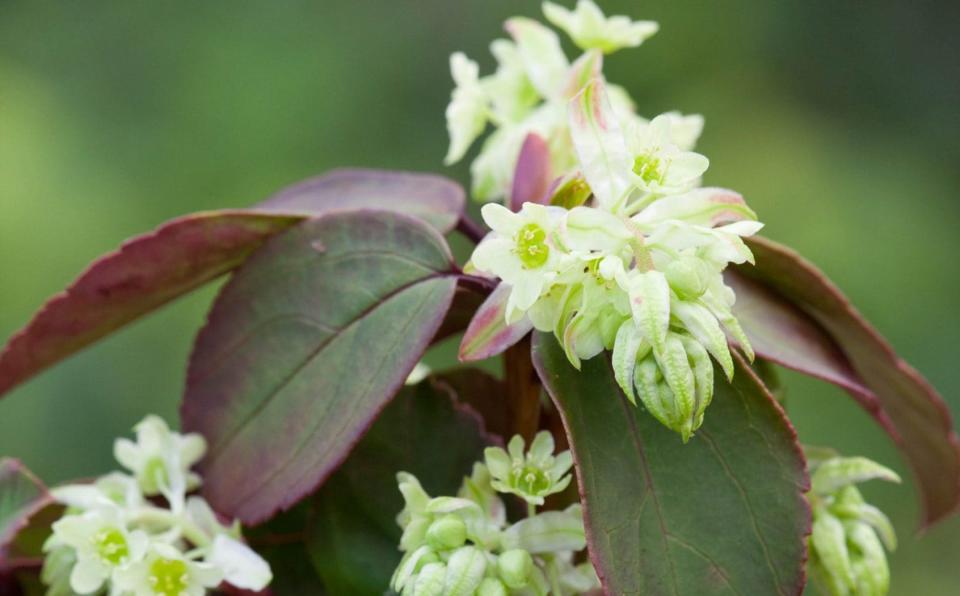
Early-season climbers may be a better choice than summer ones, as perennials can then take over in front of them. Jasminum nudiflorum would be one of my first choices in any garden. Chaenomeles japonica, or Japanese quince, can be unwieldy if left untrained, but the bright flowers are always so cheering in March.
Forsythia suspensa ‘Nymans’ has pale yellow flowers on dark purple branches. It is an elegant, less brassy version of the popular bright yellow form. Ribes laurifolium is another understated shrub, which can be persuaded to climb to about 5ft. Under a window is a good place for this currant, which has greenish flowers in early spring. The best forms are ‘Amy Doncaster’ and ‘Rosemoor’.
Roses

Roses are irresistible and not impossible for north walls, but they are probably more work than all the plants mentioned so far. ‘Mermaid’ is a sulphur yellow single-flowered beauty, very thorny and a vigorous grower, but it does flower off and on for most of the summer.
‘Albéric Barbier’ has cream-coloured flowers and glossy leaves, which are evergreen if the garden is not too exposed; and it has a second flush of flowers in September.
‘Mme Alfred Carrière’ has larger roses in creamy white that keep going intermittently. However, not for nothing is this rose known as “Mad Alf”, because taming it can be quite a struggle.
One of my favourite climbing roses for any position is ‘Phyllis Bide’, which is equally happy in shade or sun. With scented small flowers in apricot pink fading to yellow, this is more manageable than the rampant growers, and the roses keep coming all summer.
Top performer
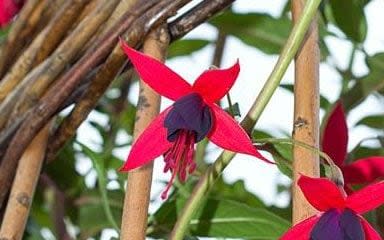
The award for the longest, brightest flowering season against a shady wall has to go to the climbing form of Fuchsia ‘Lady Boothby’. If you look up the conditions it likes, the recommendations are for part-shade, but I have two on an east-facing wall in the little courtyard to the north of our house. The one on the northern side, under the house, which gets no sun, seems to flower just as well as the one out of the shadow of the building.
Which only goes to show that you don’t need to believe everything you read or hear about where to place a plant.
Unusual choices
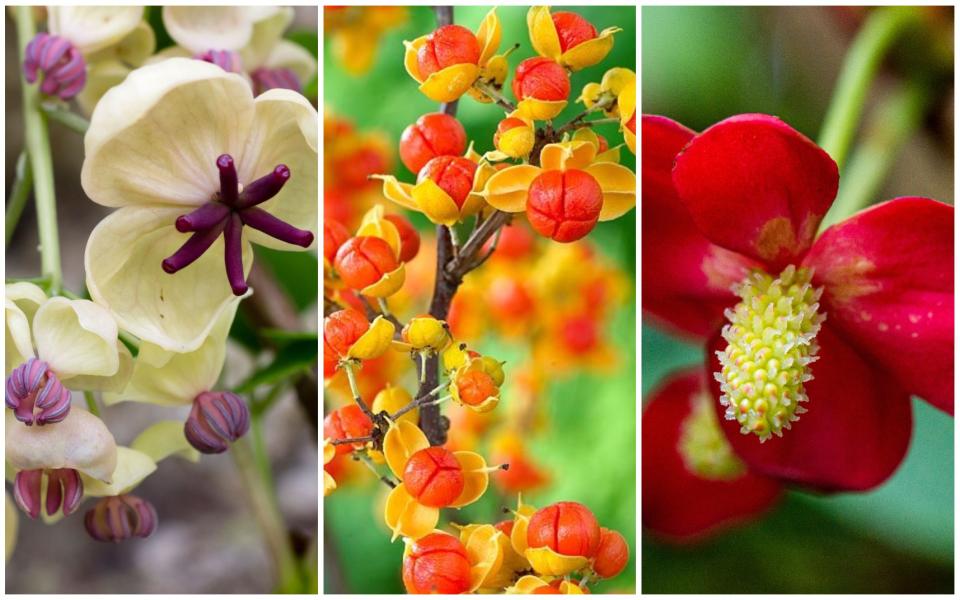
Some less-obvious twining choices for a north wall are the Akebia quinatas, which come with deep maroon or cream flowers and smell delicious. They do need managing, as they can be rampant and will tangle themselves inextricably. Another hard-to-tame but interesting plant is Celastrus orbiculatus, the oriental bittersweet. This is a large, wild climber, but good for autumn colour, with showers of yellow berries that split open to show red seeds.
Much more biddable than either of these is the Chinese magnolia vine, Schisandra rubriflora, which is my favourite climber for shade. It has tiny cherry-red flowers followed by red berries.


